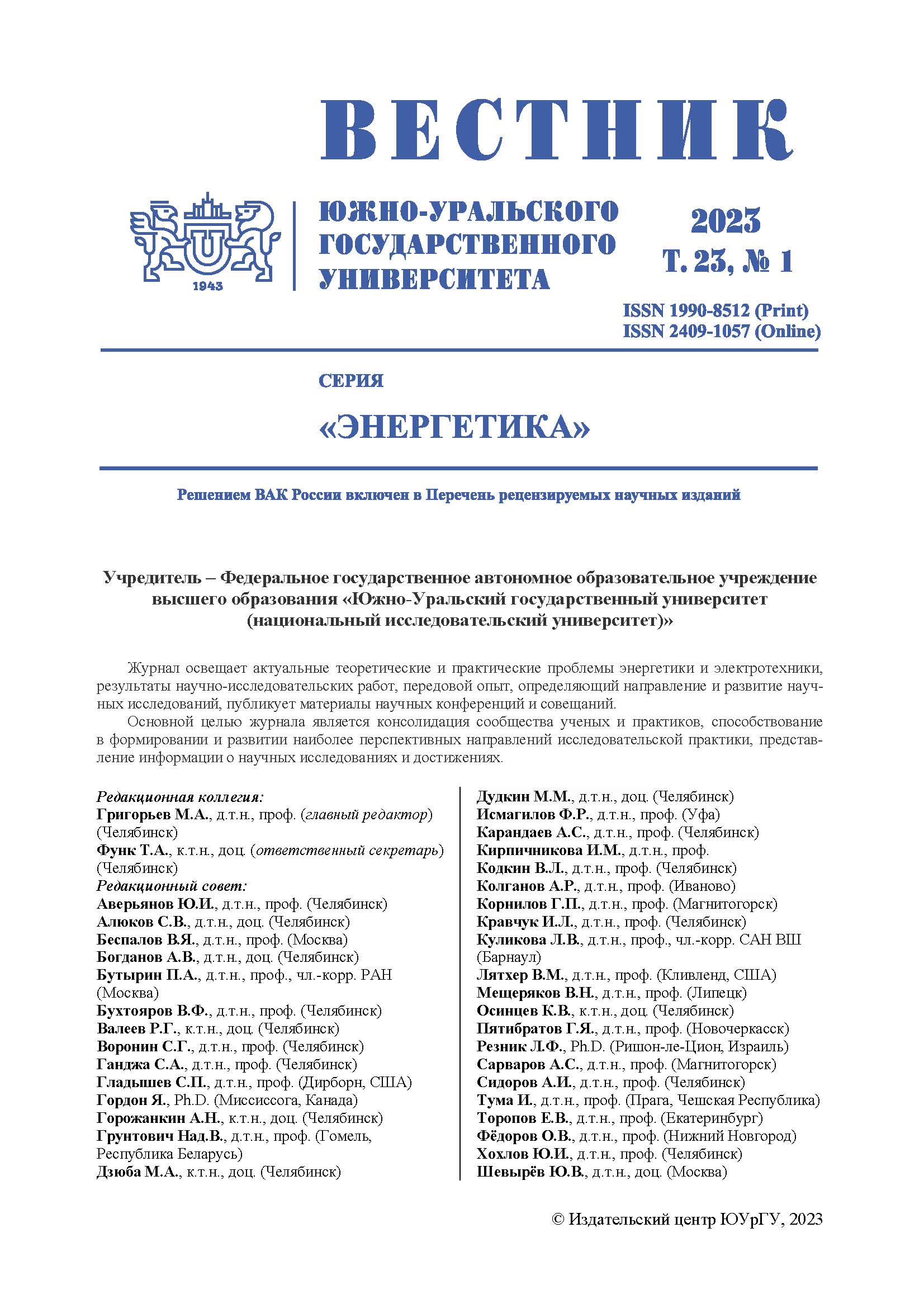GENERALIZED MATHEMATICAL MODEL OF AC ELECTRIC DRIVES
DOI:
https://doi.org/10.14529/power230112%20Keywords:
electric drives of compressors, frequency synthesis methods, control systemAbstract
The article focuses on the synthesis and analysis of control loops for electromagnetic torque and current in AC drives. Thus the approximation of the invariable part of the electric drive by a linear system with amplitude modulation of the signal is applicable in the problems of synthesis and analysis of torque and current control loops. It is proven that it is possible to consider independently steady-state and transient processes of variables in the phase windings of the motor. In order to take into account, the presence of cross magnetic couplings of three-phase windings of an electric machine, methods of frequency identification of regulated objects should be applied. It should be noted that the implementation of the mathematical description of the system by a simplified set of equations greatly simplifies the process of setting up and configuring systems by service staff. The band of uniform frequency transmission in the current control loop reaches 4000 rad/s, which is proved by experiments with frequency characteristics. This greatly simplifies the process of tuning the torque control loop at a speed of 6000 rpm. With the introduction of corrective signals, an additional increase in speed is possible while maintaining the specific weight and size characteristics of the electric drive. A decrease in the inductive leakage resistance of the phase winding due to a decrease in the phase zone of the winding in multi-phase electric drives with the number of phases m>3 has been recorded. This leads to a significant expansion of the frequency bandwidth in the speed, current and torque control loops.
Downloads
References
Шаталов А.С. Преобразования сигналов и изображающих их функций обобщенными линейными системами автоматического управления. // М.–Л.: Энергия, 1965. 344 с.
Бродовский В.Н., Иванов Е.С. Приводы с частотно-токовым управлением. // М.: Энергия, 1974. 168 с.
Gryzlov, A.A., Grigorev, M.A. Frequency-Response Methods for Synthesizing Controlled High-Speed Elec-tric Drives of Compressors. // Russ. Electr. Engin. 2019. no. 90. P. 364–369. DOI: 10.3103/S1068371219050055
Denisov, V.A., Tret’yakova, M.N., Borodin, O.A. A Comparative Analysis of Transient Processes in an Asynchronous Motor. // Russ. Electr. Engin., 2018. no. 89. P. 137–142. DOI: 10.3103/S1068371218030070
Усынин, Ю.С., Григорьев М.А., Виноградов К.М. Электроприводы и генераторы с синхронной реак-тивной машиной независимого возбуждения // Электричество. 2007, №3. С.21 – 26.









